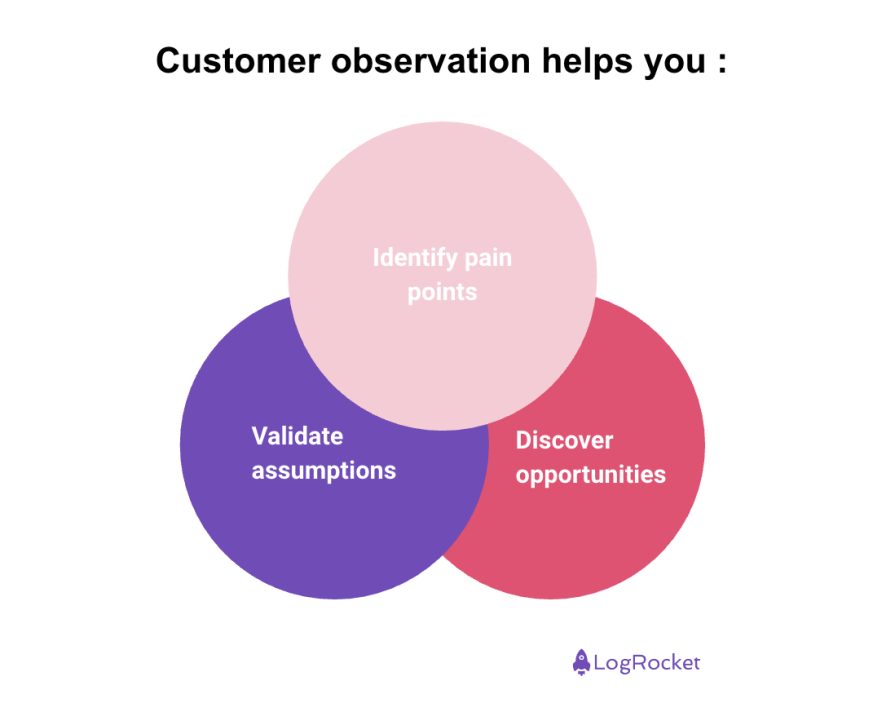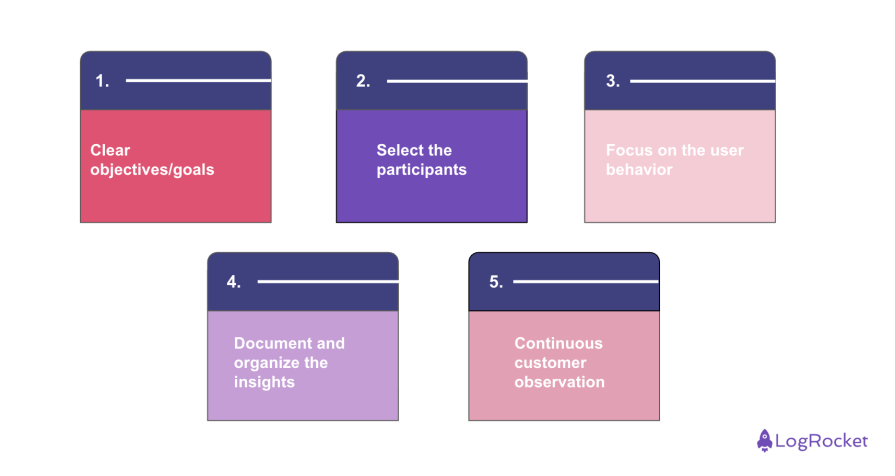In 2023, while I was working at Zalando, my team built a tool for 400 internal users. This tool was supposed to replace an older tool that had existed since the company was formed because it was too complex and no longer provided what it needed to.

These 400 users were photographers, image editors, and copywriters who were a part of the Zalando Fashion Studio. Because we had such a wide range of users, a fellow senior engineering manager and I decided to work from their studio to get a closer look at their day-to-day life and use of the tool. For a couple hours a day, we would sit next to the users and observe their work.
As we did this, we maintained a working document to record two questions:
- How do the users use the tool?
- Why do the users perform certain actions?
By doing so, we began to understand our users’ problems so that we could develop better solutions. The process I just described is called customer observation. Keep reading to learn more about customer observation, including why it’s important, key techniques, and best practices.
What is customer observation?
Customer observation is the process of closely monitoring your customers in their natural environment. This helps you understand their pain points, needs, user patterns, and in general what works for them versus what doesn’t.
Why is customer observation important in product management?
As a product team, the most important people are your customers. Everything needs to start with them. Customer observation helps you:

Identify pain points
Without understanding pain points, it’s not possible to build a good product. Even though there are several tools you can use to understand pain points, nothing beats being together with the customers and understanding their natural behavior.
There have been cases in my product management journey where the users weren’t able to articulate/share their pain points, but by monitoring their usage I was able to come up with these pain points by myself. I later validated them with the customers.
Validate assumptions
PMs come up with a lot of hypotheses and assumptions that need to be validated. Customer observation lets you see whether your assumptions are right or wrong. This eventually leads to better-informed decisions.
Discover opportunities
Back at Zalando, half of our time was spent sitting next to the users to understand their user behavior. As a PM, I discovered some very important unmet needs and usage patterns during the sessions.
One of them led to us building completely new, in-house image editors that eradicated the need to manually open each image in Photoshop. We also created a functionality where all images opened in Photoshop automatically, saving time for the users.
Why are some key techniques for effective customer observation?
Effective customer observation requires a selection of structured techniques that suit your customers and the teams. Some of the most effective ones include:
Shadowing
Shadowing helps you monitor user actions. In this method, the observer (usually a product manager along with an engineering counterpart) sits next to the customer and watches their actions as they use the product/service. The observer also takes notes during the session to highlight any important pain points, user patterns, or new needs that potentially might convert into a feature.
Contextual inquiry
This is similar to shadowing, however, the only difference is that instead of just observing the customers, the observer also asks relevant questions regarding certain actions if needed. This is more suitable when you want to understand why the user uses the product in a certain way.
User journey mapping
User journey mapping is a simple technique where the observer documents every step the user takes while observing them. Later on, the steps are structured and pain points, bottlenecks, drop-off points, or friction points can be identified.
Usability testing
Last, but not least is usability testing. In this method, a product or a service is introduced and tested with real users. It focuses on the users as they complete certain actions geared towards one specific goal. This is one of the preferred ways for you to test early ideas, MVP, and build products that are already tested and validated by the users.
Best practices for implementing customer observation
Selecting the right customer observation technique and implementing it requires a good understanding of the customers and what you as a product team are looking for. Here are some of the best practices that have helped me as a PM:

Clear objectives/goals
It’s essential to understand the end goal or the objectives behind the customer observation. Are you trying to test a new product and looking for feedback from the customer? Or do you want to build a new product and understand how your customers see the current product? Or you are in the exploration phase and want to understand your user’s behavior. Having a clear objective at the start will help you to identify and plan the customer observation.
Select the right participants
Do you need new customers who have recently started using your product or returning users who have been using your product for a very long time? Do you want customers from a specific geographical location? Do you want customers from a specific age group? Make sure you have answers to these questions so you select the right participants.
Focus on the user behavior
Don’t focus on solutions and more importantly don’t ask “What’s the biggest problem you’re facing while using the tool?” This is mainly because the customers themselves don’t know. Instead, focus on closely monitoring what the customers are doing and tracking their journey. By doing so, you can identify friction across the whole experience and figure out your customer problems.
Document and organize the insights
Since you’ll be working with a lot of customers, you’ll end up with tons of information. As a PM, it’s important to have a structure where information is recorded and can be accessed in a fast and easy way.
Continuous customer observation
For effective customer observation, you need to keep up with it. Make customer observation a part of the product development process. This’ll help you keep the product relevant and make sure it solves the problems of the users. Customer behavior and patterns change with time and your product and your team must adapt to those changes.
Final thoughts
Customer observation is a key to building the right product. With the rise of AI, more tools have entered the market to let you capture insights from customers and organize them in a meaningful way. This should help make customer observation easier.
But even without AI or automated tools, it’s important to be at the forefront of your industry and actively connect with the customers. Meeting customers in their natural habitat is the easiest, quickest, and most effective way to build that connection. What techniques have you used for customer observation? Share in the comments and come back for the next article.
Featured image source: IconScout